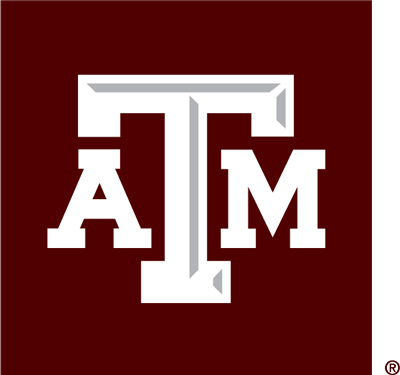Biography
Professional Links
- Campbell Lab
- Research Experience for Undergraduates summer program: Observing the Ocean
- On the Ocean weekly radio program on KAMU
- Texas Observatory for Algal Succession Time series (TOAST)
- https://www.researchgate.net/profile/Lisa_Campbell11
- https://www.facebook.com/CampbellLabTAMU
Current Projects
- NOAA, “ECOHAB19: Multidisciplinary approach to a cross-regional problem: Dinophysis and DSP toxicity
- National Science Foundation, “REU: Observing the Ocean”
- NOAA, “ECOHAB 2017: Life and Death of a Karenia bloom”
Research Interests
- Phytoplankton population dynamics
- Harmful algal blooms and mechanisms of bloom formation
- Transcriptomics and metabolomics of marine phytoplankton
- Ocean observing systems
- Flow cytometry and imaging-in-flow cytometry
Research Areas
- Biological Oceanography
- Phytoplankton
- Harmful Algal Blooms
Educational Background
- Ph.D. Biological Oceanography, SUNY Stony Brook, New York, 1985
- M.S. Marine Environmental Science, SUNY Stony Brook, New York, 1983
- B.A. Biology, with honors, University of California at Santa Cruz, 1976
Industry Experience
-
- Professor, Dept. Oceanography, Texas A&M Univ., Sept 2006-present
- Associate Professor, Dept. Oceanography, Texas A&M Univ., 1996-2006
- Research Scientist, Dept. Oceanography, University of Hawaii, 1988-1996
- Postdoctoral Fellow, Bigelow Laboratory, Maine, 1986-1987
- Postdoctoral Fellow, Oceanic Institute. Waimanalo, HI, 1985-1986
- Graduate Assistant with Dr. E.J. Carpenter, SUNY Stony Brook, 1979-1985
- Staff Research Associate with Dr. O. Holm-Hansen, Scripps Institution of Oceanography, 1976-1979
Awards & Honors
- Regents Professor
- William R. Bryant Chair in Oceanography
- Association for the Sciences of Limnology & Oceanography, Sustaining Fellow, awarded 2015
- Association of Former Students award for Distinguished Achievement in Teaching, College of Geosciences, 2015
- Women's Faculty Network Outstanding Mentoring Award (TAMU), 2014
- Dean’s Distinguished Achievement Award for Faculty Research, College of Geosciences, 2009
- Ethel Ashworth-Tsutsui Memorial Keynote Speaker, 2006
- Big12 Conference Fellowship Award (TAMU), 1998 and 2006
- Sigma Xi Research Award
- Jessie Smith Noyes Fellow (SUNY Stony Brook)
Selected Publications
- Fiorendino, J.M., C.C. Ganokar, D.W. Henrichs, and L. Campbell. 2021. Drivers of microplankton community assemblage following tropical cyclones. Journal of Plankton Research doi:10.1093/plankt/fbab073
- Henrichs, D.W., S. Anglès, C.C. Gaonkar, and L. Campbell. 2021. Application of a convolutional neural network to improve automated early warning of harmful algal blooms. Environmental Science and Pollution Research 28(22): 28544-28555 doi: 10.1007/s11356-021-12471-2
- Fiorendino, J. M., J. L. Smith, and L. Campbell. 2020. Growth response of Dinophysis, Mesodinium, and Teleaulax cultures to temperature, irradiance, and salinity. Harmful Algae 98:
doi: 10.1016/j.hal.2020.101896 - Wolny, J. L., T.A. Egerton, S.M. Handy, W.L. Stutts, J.L. Smith, E.B. Whereat, T.R. Bachvaroff, D.W. Henrichs, L. Campbell and J.R. Deeds. 2020. Characterization of Dinophysis spp. (Dinophyceae, Dinophysiales) from the mid-Atlantic region of the United States. Journal of Phycology 56: 404-424 https://doi.org/10.1111/jpy.12966
- Anglès, S., Jordi, A., Henrichs, D. W. & Campbell, L. 2019. Influence of coastal upwelling and river discharge on the phytoplankton community composition in the northwestern Gulf of Mexico. Prog. Oceanogr. 173:26-36.
- Campbell, L., D.W. Henrichs, E.E. Peacock, J. Futrelle and H.M. Sosik. 2017. Imaging FlowCytobot provides novel insights on phytoplankton community dynamics. In: Proenca, L. A. O. and Hallegraeff, G. (eds). Proceedings of the 17th International Conference on Harmful Algae. International Society for the Study of Harmful Algae and Intergovernmental Oceanographic Commission of UNESCO 2017. ISBN 978-87-990827-6-6.
- Henrichs, D.W., R.D. Hetland and L. Campbell. 2015. A spatially explicit individual-based model to identify origins of blooms of the toxic dinoflagellate Karenia brevis in the western Gulf of Mexico. Ecological Modelling 313:251-258 doi: 10.1016/j.ecolmodel.2015.06.038
- Anglès, S., A. Jordi and L. Campbell. 2015. Responses of the coastal phytoplankton community to hurricanes revealed by high-frequency imaging flow cytometry. Limnology & Oceanography 60(5): 1562-1576 doi: 10.1002/lno.10117
- Ryan, D.E. and L. Campbell. 2015. Comparative transcriptomic analysis of three toxin-producing Karenia In: MacKenzie, A. (ed.) Marine and Freshwater Harmful Algae 2014. Proceedings 16th International Conference on Harmful Algae. pp. 229-232.
- Harred, L.B. and L. Campbell. 2014. Predicting harmful algal blooms: A case study with Dinophysis ovum in the Gulf of Mexico. Journal of Plankton Research 36(6): 1434–1445
- Ryan, D.E., A. Pepper and L. Campbell. 2014. De novo assembly and characterization of the transcriptome of the toxic dinoflagellate Karenia brevis. BMC Genomics 15:888 doi:10.1186/1471-2164-15-888
- Keeling, P. J., et al. (Campbell, L.) 2014. The Marine Microbial Eukaryote Transcriptome Sequencing Project (MMETSP): Illuminating the functional diversity of eukaryotic life in the oceans through transcriptome sequencing. PLoS Biology 12(6): e1001889 doi:10.1371/journal.pbio.1001889
- Errera, R.M., S. Yvon-Lewis, J.D Kessler, and L. Campbell. 2014. Reponses of the dinoflagellate Karenia brevis to climate change: pCO2 and sea surface temperatures. Harmful Algae 37: 110-116.
- Thyng, K.M., R.D. Hetland, M.T. Ogle, X. Zhang, F. Chen, and L. Campbell. 2013. Origins of harmful algal blooms along the Texas coast. Limnology & Oceanography: Fluids and Environments 3: 269-278 http://lofe.dukejournals.org/content/3/269.full
- Campbell, L., D.W. Henrichs, R.J. Olson, and H.M. Sosik. 2013. Continuous automated imaging-in-flow cytometry for detection and early warning of Karenia brevis blooms in the Gulf of Mexico. Environmental Science and Pollution Research 20:6896-902 doi 10.1007/s11356-012-1437-4.
- Henrichs, D.W., M.A. Renshaw, J.R. Gold, and L. Campbell. 2013. Genetic diversity among clonal isolates of Karenia brevis as measured with microsatellite markers. Harmful Algae 21-22:30-35 doi 10.1016/j.hal.2012.11.003.
- Henrichs, D.W., P.S Scott, K.A. Steidinger, R.M. Errera, A, Abraham, and L. Campbell. 2013. Morphology and phylogeny of Prorocentrum texanum sp. nov. (Dinophyceae): a new dinoflagellate from Gulf of Mexico coastal waters exhibiting two distinct morphologies. Journal of Phycology. 49:143-55 doi 10.1111/jpy.12030.
- Henrichs, D.W., M.A. Renshaw, J.R. Gold, and L. Campbell. 2013. Population-genetic structure of the toxic dinoflagellate Karenia brevis from the Gulf of Mexico. J. Plankton Res. 35:427-32. doi 10.1093/plankt/fbs103.
- Brand, L.E., L. Campbell, and E. Bresnan. 2012. Karenia: the biology and ecology of a toxic genus. Harmful Algae 14:156-78. doi 10.1016/j.hal.2011.10.020

